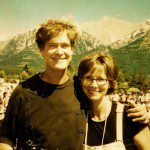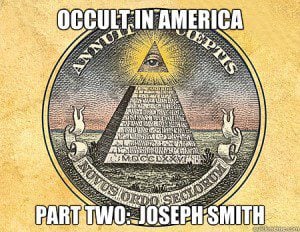 (This post is the second in a series based upon a lecture I began presenting this past Spring. That talk, “Magick and The Occult in America 1820-1952″ surveys a large swath of American History and the occult and magickal practices contained within it. None of this is meant to be the last or only word on the subject, it’s just a look into corners of history I find particularly interesting. The actual lecture has more information than the written versions (and usually more jokes!) but I wanted to present at least some of that talk here on Raise the Horns. -jason)
(This post is the second in a series based upon a lecture I began presenting this past Spring. That talk, “Magick and The Occult in America 1820-1952″ surveys a large swath of American History and the occult and magickal practices contained within it. None of this is meant to be the last or only word on the subject, it’s just a look into corners of history I find particularly interesting. The actual lecture has more information than the written versions (and usually more jokes!) but I wanted to present at least some of that talk here on Raise the Horns. -jason)
When I first began putting this workshop together I never imagined that I would spend two months of my life delving into the history of Joseph Smith and the Church of Latter Day Saints. When it was over and all my research was done if I found myself really liking “Old Joe.” Don’t worry, converting to Mormonism never crossed my mind, but I’m drawn to religious outsiders, and Joseph Smith Junior might be the most famous religious outsider of the last 200 years.
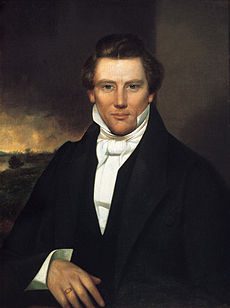 I chose Smith for my workshop because he and his family were interested in a large range of occult and magical practices. They used divining rods, practiced ceremonial magic a la Francis Barrett’s book The Magus, and were believers in astrology. Those beliefs did not make them outsiders either, it made them average. The idea that magic exists on the margins of history is just not true. People of all stripes and all religious persuasions have had flirtations with what are commonly considered “occult” practices. Later in life Joseph Smith would also become a proponent of Freemasonry. By looking at Smith I felt as if I was looking at a broad expanse of American spirituality and belief.
I chose Smith for my workshop because he and his family were interested in a large range of occult and magical practices. They used divining rods, practiced ceremonial magic a la Francis Barrett’s book The Magus, and were believers in astrology. Those beliefs did not make them outsiders either, it made them average. The idea that magic exists on the margins of history is just not true. People of all stripes and all religious persuasions have had flirtations with what are commonly considered “occult” practices. Later in life Joseph Smith would also become a proponent of Freemasonry. By looking at Smith I felt as if I was looking at a broad expanse of American spirituality and belief.
Many of Smith’s early followers were also interested in magic and the occult, which is not surprising when you think about it. Smith’s message of a new religious text surviving on “golden tablets” and then translated with the use a peep stone is completely wondrous. The very essence of the Mormonism is founded upon the miraculous and I say that with complete respect. An America with visits from the angel Moroni and housing the relics of an ancient Jewish Civilization stirs the imagination, especially in early 19th Century America and England (Smith began his church in 1827).
Joseph Smith’s new religion began with the astounding; full of alleged revelations and visions directly from Jehovah-God and his angel Moroni. Incredibly such “visions” were a part of the religious landscape in the United States during the early part of the 19th Century. Rural newspapers reported on such occurrences with seriousness and frequency. A newspaper in Palmyra New York (Smith’s local paper) ran the headline “Remarkable VISION and REVELATION, as seen and received by Asa Wild of Amsterdam New York.” (1) Beginning in the 1700’s people began to feel comfortable talking about such encounters and having them written about. People claiming to talk with God was nothing new in the 1820’s (but another book equal to The Bible is a completely different story).
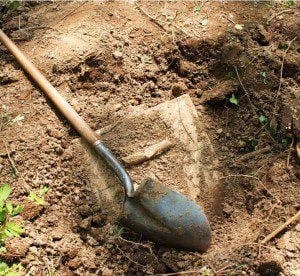 During the years Smith was visiting with Moroni he also worked with his father and brothers as a treasure hunter. The Mormon church has long been embarrassed by the treasure hunting pursuits of Smith and his family, but they shouldn’t be. Old Joe was simply a product of his times, and while most of us today probably scoff at the idea of searching for buried treasure, it was a fairly common pastime in early America. Newspapers reported people finding tens of thousands of dollars worth of gold buried in the ground and many Americans were convinced that the lost treasures of Capt. Kidd were buried somewhere in North America.
During the years Smith was visiting with Moroni he also worked with his father and brothers as a treasure hunter. The Mormon church has long been embarrassed by the treasure hunting pursuits of Smith and his family, but they shouldn’t be. Old Joe was simply a product of his times, and while most of us today probably scoff at the idea of searching for buried treasure, it was a fairly common pastime in early America. Newspapers reported people finding tens of thousands of dollars worth of gold buried in the ground and many Americans were convinced that the lost treasures of Capt. Kidd were buried somewhere in North America.
Like modern dowsers Joseph Smith’s number one working tool in the pursuit of treasure was a divining rod. A neighbor of his was quoted as saying:
“Young Joe had a witch hazel bough with which he claimed he could locate buried money or hidden things, later he had a peep stone which he put into his hat and looked into it I have seen both.” (2)
In the Mormon book Doctrine and Covenants Smith wrote:
“now this is not all, for you have another gift, which is the gift of working with the rod: behold it has told you things: behold there is no other power save God, that can cause this rod of nature to work in your hands”
E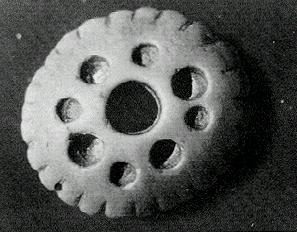 ven though Smith never managed to find any riches he still had a very good reputation as a diviner. Many treasure hunters believed that the world was alive with spirits, and that spirits often guarded the stores of gold and silver buried in the Earth. Those spirits were said to be physically active and often moved the prizes men were attempting to raise from the ground. Stories circulated of Smith leading men to treasure, only to have it move sideways several feet or burrow deeper into the Earth the moment it was touched by a spade or shovel. Joseph Smith could lead people to buried gold, but not even his skills were enough to overcome the spirits who greedily held onto their hoards in the afterlife.
ven though Smith never managed to find any riches he still had a very good reputation as a diviner. Many treasure hunters believed that the world was alive with spirits, and that spirits often guarded the stores of gold and silver buried in the Earth. Those spirits were said to be physically active and often moved the prizes men were attempting to raise from the ground. Stories circulated of Smith leading men to treasure, only to have it move sideways several feet or burrow deeper into the Earth the moment it was touched by a spade or shovel. Joseph Smith could lead people to buried gold, but not even his skills were enough to overcome the spirits who greedily held onto their hoards in the afterlife.
Smith might be most famous for using a peep stone to reveal the Book of Mormon, a once common occult practice now gone by the wayside. Peep stones have a long history of being used in magic and the occult. John Dee’s scriver Edward Kelly was said to use a “holy stone” according to Barrett’s book The Magus. In 1839 a book on “witchcraft” noted that Dee firmly:
“believed that by means of the small Blackstone with the shining service and cut in the form of a diamond, he could hold Converse with the elementary spirits.” (3)
When I think of Joseph Smith using his peep stone to translate the Book of Mormon my brain conjures up ridiculous images of Smith in the dark with his peep stone in a top-hat. As silly as that sounds sometimes, Smith wasn’t the only person to work that way with a peep stone. It was a pretty common practice among users of what are also called seer stones. In addition to translating “Reformed Egyptian Hieroglyphics” (the language of Moroni’s Golden Tablets) peep stones were also used to find buried treasure and missing objects.
Brigham Young once quoted Joseph Smith as saying:
“Every man who lived on earth was entitled to a seer stone, and should have one, but they are kept away from them in consequence of their wickedness.” (4)
Brigham Young himself was also a believer in magic stones. According to family members Young often carried an amulet with him that he called a bloodstone. He was said to where his bloodstone when he went into “unknown or dangerous places.” (5)
In addition to seer stones and divining rods Joseph Smith and family also practiced ceremonial magic. Again, this is not unique. In 1822 a magazine in New York stated that “ we find textbooks of Kabbalah, necromancy, astrology, magic, fortune-telling, and various proofs of witchcraft” when writing about a local bookstore. By the early 1800s the American backwoods were filled with book peddlers and many of them sold books pertaining to the occult. Some of those peddlers were said to sell as many as 25,000 books a year. Occult books were even more widely distributed than most other volumes because they were more likely to be copied. (6)
Many of the occult tools, rituals, and beliefs held by the Smith family can be traced back to the book The Magus by Francis Barrett first published in 1801. The Magus contains a great deal of information on astrology, a belief that Smith carried with him throughout his life. The dates Smith chose for his nuptials with his many wives even revolved around astrological dates.
The Magus also includes instructions for the construction of a Mars talisman, which just so happens to match the symbols found on the Smith family dagger. Their magical knife was used to create magical circles, and Joseph Smith was said to have used it for that purpose on treasure hunting expeditions. (7) Members of the Smith family also used magical parchments on occasion, complete with instructions for calling up angels and keeping oneself safe from bodily harm. Many old Mormon houses in Utah have magickal parchments built directly into the walls and foundations for good luck and safety. (8)
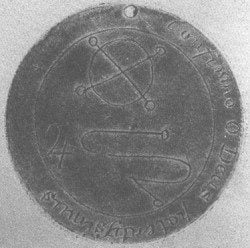 Joseph often wore Jupiter talisman around his neck , believing that no harm would come to him while he wore it. (Sadly, he was wearing said medallion when murdered by an angry mob in Carthage Illionis in 1844.) LDS Church historians once claimed that Smith’s medallion was “Masonic” in origin, but it’s yet another formulation taken from The Magus. Smith’s medallion contained the astrological symbol, seal, and sigil of the planet Jupiter on one side along with the the Latin words “Confirmo O Deus potentissimus” or “Oh God Make me All Powerful!” The flip side of his medallion contains the Hebrew word “abba” (for father, a reference to God) and a square of numbers in Hebrew that add up to 136, the magic number of Jupiter. Smith was born under the sign of Jupiter and took that information very seriously. (9)
Joseph often wore Jupiter talisman around his neck , believing that no harm would come to him while he wore it. (Sadly, he was wearing said medallion when murdered by an angry mob in Carthage Illionis in 1844.) LDS Church historians once claimed that Smith’s medallion was “Masonic” in origin, but it’s yet another formulation taken from The Magus. Smith’s medallion contained the astrological symbol, seal, and sigil of the planet Jupiter on one side along with the the Latin words “Confirmo O Deus potentissimus” or “Oh God Make me All Powerful!” The flip side of his medallion contains the Hebrew word “abba” (for father, a reference to God) and a square of numbers in Hebrew that add up to 136, the magic number of Jupiter. Smith was born under the sign of Jupiter and took that information very seriously. (9)
Like many early Americans Joseph Smith had a complex relationship with Freemasonry. The Book of Mormon was written (revealed) in the 1820’s during a period of anti-Mason hysteria in the United States. Several passages in the book allude to that. While the Book of Mormon doesn’t literally ban the practice of Freemasonry, it does warn against secret groups, which many have taken to mean Freemasonry. However those warnings did not stop Joseph Smith himself from taking an interest in “The Craft” in the last few years before his death in 1844.
 Most of the “secret Temple rites” that are a part of the Mormon Church were only added after Joseph Smith became a Freemason. Secret rituals, words, and handshakes all have their origins in Masonic tradition. Even the famous “Mormon Underwear” are not free of Masonic influence. Freemasonry’s square and compass can both be found on Mormon Temple Garments, the square on the right and the compass on the left.
Most of the “secret Temple rites” that are a part of the Mormon Church were only added after Joseph Smith became a Freemason. Secret rituals, words, and handshakes all have their origins in Masonic tradition. Even the famous “Mormon Underwear” are not free of Masonic influence. Freemasonry’s square and compass can both be found on Mormon Temple Garments, the square on the right and the compass on the left.
The largest “homegrown” religion in the United States is the Mormon Faith, a faith with very real occult roots. I have no interest in becoming a “Christo-Mormon-Pagan” but I’m fascinated that Modern Paganism shares at least a little of the same lineage. To some extent we both grew out of the Western Magical Tradition. Perhaps at the religious gathering table we’ll all sit down one day and compare tarot cards and peep stones.
There are other bits in this series, including a write-ups of Albert Pike and The Long Lost Friend. While not originally a part of this series the lecture included material on Johnny Appleseed who I have written about previously. It also includes a section on The Church of Aphrodite which Aidan Kelly wrote about last year. (As this was initially posted while on the road, depending on when you are reading this, those links may or may not work.)
________
Before being written down (or Dragon Dictated down) this post was part of a lecture. Since there are so many quotes in this piece I have tried to provide a few footnotes, but as this was originally designed as a spoken piece and I’m sure I’ve missed a few. I used the following books for research purposes, especially the first two.
Early Mormonism and the Magic World View by D. Michael Quinn published by Signature Books in 1998 is where all of the quotes in this piece come from. Early Mormonism is more than a just a peek into the lives of Joseph Smith Jr. and family, it’s an extensive look at magick and the occult in the early United States. Even if you don’t have much interest in the early LDS Church this book is completely worth picking up.
No Man Knows My History by Fawn Brodie last revised in 1995 and published by Vintage remains the best available biography on Smith. Reviled by many in the Mormon Community, I think it paints a sympathetic portrait of Old Joe, I liked him after reading Brodie’s work. It also contains a lot of information on Smith’s borrowings from Freemasonry.
The Angel and Sorcerer by Peter Levenda from Ibis Press and published in 2012 is a decent introduction to the topic, but lacks much substance. Brodie, who originally wrote History in 1945, provides more depth on the overlap between Masonry and Mormonism than Levenda.
1. See Quinn page 14
2. Quinn page 33
3. Quinn page 40
4. Quinn page 245
5. Quinn page 88
6. Quinn page 21
7. Quinn page 341
8. Quinn page 134
9 Quinn page 83



